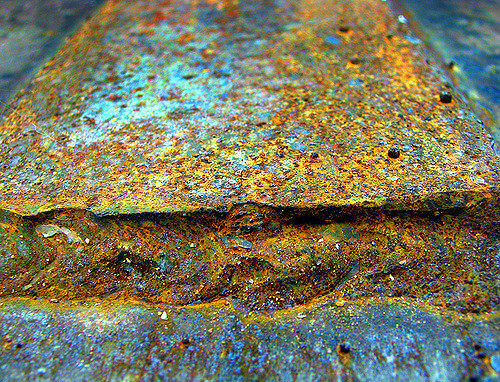The appearance in the tailings of free gold, which is not especially finely divided, but, nevertheless, is not in a condition to be amalgamated, may be regarded as a rare occurrence, but deserves some consideration. Amalgamation is in these cases prevented by the existence of a thin film of some neutral substance over the surface of the gold. The film may be so thin as to be transparent, but it is enough to prevent contact between the gold and the mercury. The disastrous effect of a film of grease covering gold particles has already been remarked upon. It is said to have been a fruitful source of loss in the treatment of certain ores in the Transvaal that they were impregnated with mineral oil. The effects of grease may be combated by the use of chemicals (caustic alkalies, potassium cyanide, &c.), but it is, of course, better to use every precaution to avoid the introduction into the pulp of candle grease from the mine or of oil from bearings, guides, &c., or contained in steam from the boiler. Losses in amalgamation are also caused by the greasy substances contained in some ores, such as the powdered hydrated silicates of magnesia and of alumina, which cause frothing, and coat the gold with a slime which prevents the action of the mercury.
Others films are formed of oxide of iron, compounds of sulphur, arsenic, or of silica. Some years ago J. Hankey, of San Francisco, had a collection of particles of native gold which appeared as bright and lustrous as usual, but were coated by thin translucent films of red oxide of iron. These particles of “ rusty ” gold could not be wetted by mercury, but, if a piece were snipped off one end, the mercury seized on the fractured surface at once. Such gold seems to be rare in nature.
In 1867, William Skey, of the Geological Survey of New Zealand, after a series of experiments on the ores and tailings of the Thames Valley, came to the conclusion that the bright gold particles which refused to amalgamate were always coated by some compound of sulphur. He found that gold takes up sulphur from sulphides of ammonium or sodium, or from sulphuretted hydrogen, when brought in contact with their solutions, and that after this the gold refuses to amalgamate. He supposed that these compounds of sulphur were often formed by the action of acidulated water on the minerals in ores, and that consequently “ a large area of the natural surfaces of native gold is covered with a thin film of auriferous sulphide, and that the greater part of the gold which escapes amalgamation at the battery consists of this sulphurised gold.”
